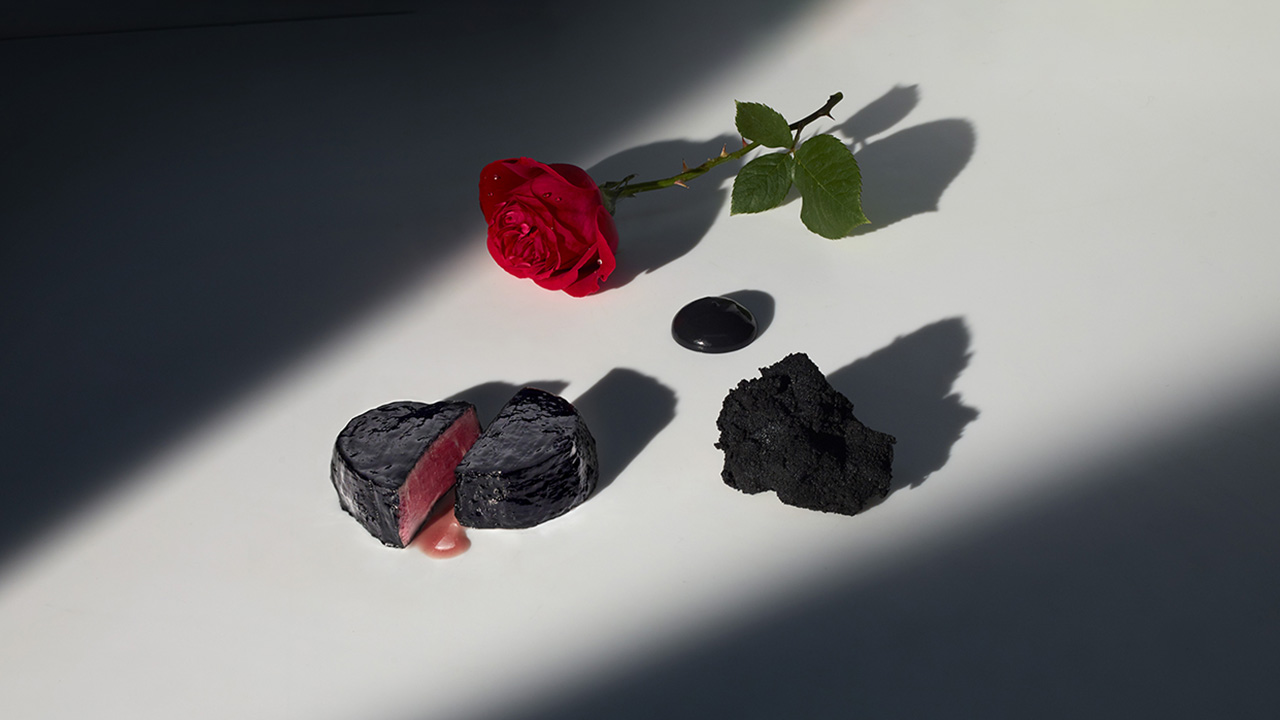What happens when fine dining meets immersive theatre? WXO Founder James Wallman and Co-Founder and immersive experience creator Martin Coat visit Park Row, the new DC-inspired “immersive restaurant experience” in London’s Soho, to find out.
James Wallman: “The food and wine were fantastic. I just want more story as well.”
When I first heard of Park Row, billed as the world’s first fully immersive, DC-inspired restaurant experience, I was curious.
At The WXO we’re intrigued by the word “immersive”. It’s become a buzzword that too many people are using, a catch-all term that’s lost its original meaning and is often used simply as a marketing term to say to people, “Hey, we’re doing something interesting and you should come along”.
(Dig deeper on the industry’s POV on what immersive really means, and how it should be used in Campfire 20: The Immersive Firestarter With Noah Nelson, Stephanie Riggs And Maël Magat.)
But I was also intrigued because it’s the WXO’s duty to support our members. And two of our newest members are Emily Png and Stuart Wee, who were inspired by London-based experience makers such as Secret Cinema and Punchdrunk to create their amazing immersive dining experiences in Singapore.
So I wondered, is this going to be Secret Cinema, with food, with Batman starring? Or is it going to be dining with characters from the DC universe?
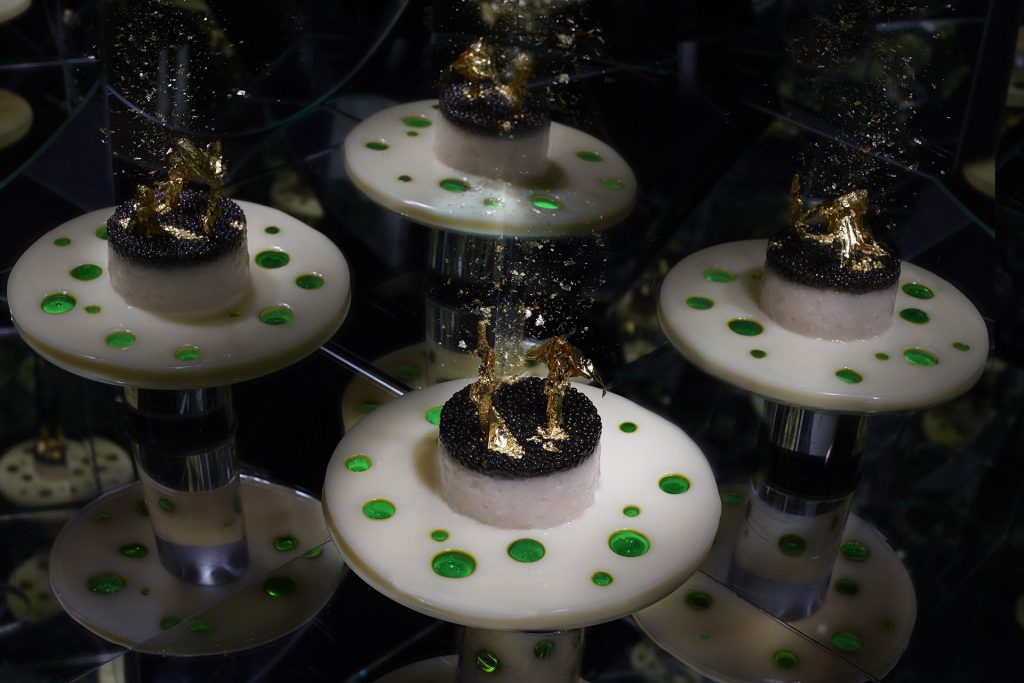
I organized to go with WXO Co-Founder Martin Coat, whose background is in creating immersive experiences.
The first thing to say is this: we had a great time. The second thing to say is we were completely surprised by what we found.
If you’re intending to go, you might want to stop reading right now. We’ll try and keep spoilers to a minimum. We’ll give a brief description of what’s happened and run through our normal format: what we liked, what we thought could do with some improvement, and ideas that we would gladly take and put into experiences that we were consulting on or designing from scratch.
Anticipation? No costumes
When the confirmation email came through, it said no costumes. So instantly, I realized this wasn’t going to be Secret Cinema wiht food. And it wasn’t – to borrow from No Proscenium’s / Noah Nelson’s definition of immersive – going to be the audience at the same level as the work. Curious.
Arrival: Almost Perfect
The entrance is on Brewer Street in Soho. It’s very buzzy and very busy. The ground-floor entrance is instantly different. It’s styled as Bruce Wayne’s library, with a traditional, slightly American feel. As you step inside, the threshold bears the numbers “1939” – the first year that Batman appeared in a DC Comic. It would have been easy to miss. There are lots of little Easter eggs for people who are super fans of DC Comics.
Something for all: Skimmers, Swimmers, Divers
It’s really important, and this is borrowing from Coat, that when you have any kind of immersive experience, you think of your audience in three types. You have the skimmers, the swimmers and the divers.
- The skimmers are the people who that aren’t really bothered about your backstory, who have come along just to have fun.
- The swimmers are the people who get a little bit more involved during the experience
- The divers are the superfans who know the story and will perhaps think about it beforehand and afterwards.
A restaurant from Wonderland

I think trying the team at Wonderland Restaurants have thought of each of these audiences in their design. They come from a dining background. The founder James Boulmer’s previous work includes Dinner by Heston Blumenthal, the renowned fine dining restaurant that has references to medieval and old school British dining. The menu features dishes that look like one thing but in fact are somethign completely different. “Meat Fruit”, for instance, may look like an orange, but actually it’s a chicken liver and foie gras parfait.
A hidden entrance to the bat cave
Back to the entrance. We went into the library and were greeted separately as we arrived at different times. I was greeted by a very tall smartly dressed man. He checked my name, and clicked a secret button to open up one of the bookshelves – there are no doors. There’s no way through unless somebody shows you the way through. So that makes you feel special. It reminded me of those secret bars and restaurants in Manhattan, such as Please Don’t Tell and La Esquina. So there’s a real sense of that you’re discovering something that’s hidden.
You go in and everything is painted black, then you go down a circular staircase. There’s a sort of architectural light installation that goes down and down and down, so you feel like you’re going down into the Batcave. You get to the bottom and go through the doors into a vast, cavernous, luxury dining space. It has an Art Deco, 1930s/40s feel, but high-end luxury. There’s a bar with a frozen penguin with dry ice coming from it and other hints to the theme. It’s very subtle, a bit like the way you’re supposed to dress. You don’t dress up. This is not cosplay. This is not that kind of immersive experience.
“It’s high-end dining with a couple of hints that we are in the world of DC Comics.”
A man came over to us who had an envelope with my name on it. Inside there was a $1 bill with the Joker on it and some kind of coin. The maitre’d had an umbrella brooch on his lapel, a gentle nod to The Penguin who is often seen carrying an umbrella. This gives an idea of the subtlety. We went through into a sort of ante room off to the side of the main drinking and dining space, where all the diners for that evening’s show at the Monarch Theatre. There was a portrait in a slightly tacky, cartoony style of Bruce Wayne’s mum and dad with him as a little boy, and a spooky clown in a glass cabinet from a fairground, a bit like the one in Big. We were told to come up and put the coin in the clown. Its hand moved around and landed on either light or dark, which determined the drink that you would get. Each of us were then told that our soul was light or dark, and offered a creamy or dark apéritif accordingly. (We were curious to find out if they were the same drink, just served in different colours. They weren’t.)
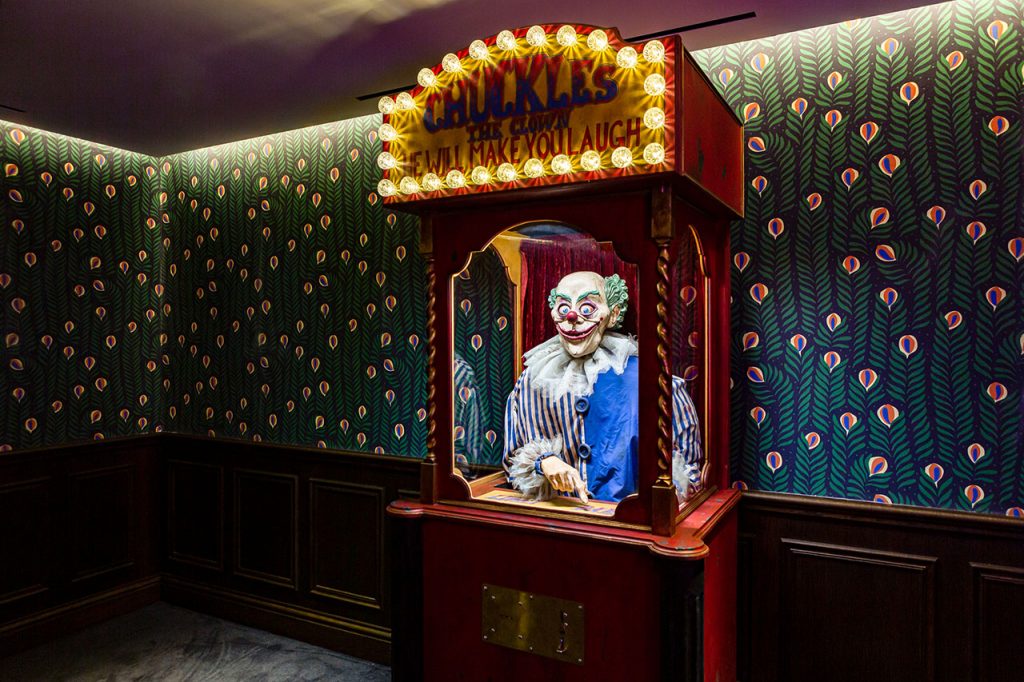
However, although it was a nice piece of memorable theater associated with the selection of a drink, at the same time there was no sense that this was personalised in any way or had any meaning. It was simply that for some people, it would go left, some people would go right, and then you’d have your light drink or your dark drink.
We were then invited to go through to the dining room. It had white walls and a long white table with 10 chairs along each side. The white walls were actually screens that were used for projection mapping. However the ceiling was quite low and therefore prominent (in our eyes), so it prevented the fully immersive feeling you might get with screens that surround you, like at the llluminarium in Atlanta or Jurassic Ocean in Moscow.
A guessing game for foodies and DC Comic fans
Then came the food. We then had a dozen courses or so. Each course turned into a guessing game. Each was preceded by something that a game to guess which DC Comic character it was associated with. (They ranged from The Riddler to The Penguin, Scarecrow, Harley Quinn, The Joker, Poison Ivy, Mr. Freeze, Catwoman, Bruce Wayne, Wonder Woman, and Superman.)
In this guessing game, our head waiter / sommelier would tell a tale, set us a task and make a loose connection between the DC comic character and the dish we were about to eat.
For example, the first one was The Riddler. But we weren’t told that. Some green graffiti appeared on the walls saying, “What tastes better than it smells?” In front of each of us was the sort of metal toy you might have in an escape room. You had to move the letters around until you spelt out a six-letter word. Since the answer to the question – spoiler alert! Look away now if you don’t want to know! – was ‘tongue’. So you had to spell that out across the metal device. Then, that was it. Another waiter took the device away, and we ate. That’s the sort of simple thing that happened for each course.
So it’s less an immersive story, more a wonderful tasting menu, with a dash of DC Comics and great wines – a Riesling with the fish, port with dessert – with an additional bit of story and theatrics. The food to be clear, was fantastic – considered, interesting, tasty, surprising. The dark martini, for instance, looked exactly like a martini, but turned out to be duck soup.
“It’s less an immersive story, more a wonderful tasting menu, with a dash of DC Comics and great wines”
But while I liked the food, and I was amused by the extra DC Comic story, to me they felt like gags, as if a comedian were telling one-off jokes, rather than an organised story. It’s seemed like a novel way to introduce some really fabulous food. Often they were quite memorable, but also tangential, and were always inconsequential, like asides in a play that doesn’t move the narrative forward.
The standout memorable moment, which illustrates all this, was the serving of the final dish, which was associated with DC Comics’ Superman. The screens displayed the Earth moving down, and so we felt like we were moving into space. Then, fruits of the forest sorbet was served in pods (which I was later told was supposed to represent the pods that Superman came to Earth in). And the pods were on plates levitating about four inches high because, of course, Superman could fly.
What’s good about the experience?
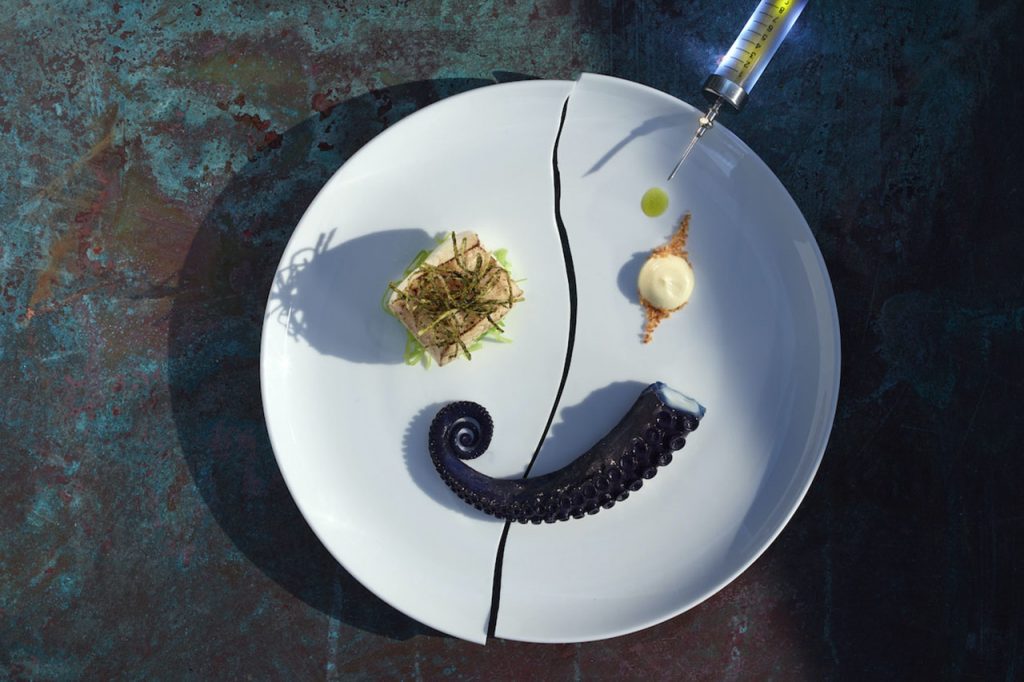
- The food. This was a high-end, fine dining experience, and it was excellent. What was interesting about it, therefore, is that they’ve thought about who is our target market. I think Park Row is about £195 per person, including wine, rising to £249 from November 23. So they have a particular target market. And this was really for people who would be interested in the high-end dining market who want a twist, that sort of next level, because the connection with DC Comics made it memorable and different.
- How to reference DC Comics but still keep the experience very high end. Nobody was wearing Batman clothes. Nobody came in in a Catwoman suit. Nobody had Joker make-up on. There were no verbal gags. Instead it was a series of memorable moments to bring out the food.
- The arrival at Bruce Wayne’s library, and the lack of the door. Going through a secret door and down into the Batcave and then into a fantastic high-end luxury room felt very special.
- The screens and the animation: very well done.
- The memory anchor at the end: we were given a box of chocolates and a program with the cast, the cocktails and reminder of the food we’d eaten.
- The main space at Park Row: it has an ideal, high-end see-and-be-seen London feel to it. Not overly dissimilar to The Wolsley, but hipper and more glamorous. And, of course, underground in a batcave. There was a fantastic band playing live the night we were there.
What could be improved?
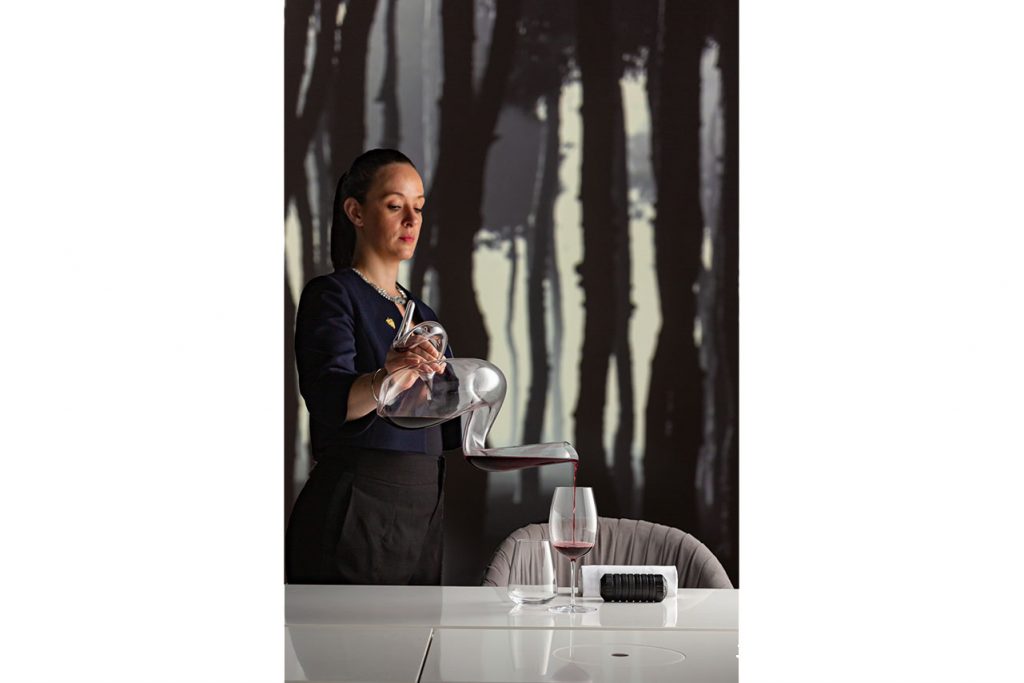
- I was surprised that they had billed this as being a “immersive restaurant experience”. I was confused because I was expecting it to have an immersive storyline that one could play along with and be immersed in. That didn’t happen. But also, that didn’t seem to be the intention. They had very good service staff, but they hadn’t decided to use actors or interactors. And I think some actors and interaction could really elevate the experience. When I arrived in Bruce Wayne’s library, the man who spoke to me was brilliant. But if he had spoken to me as if he was Bruce Wayne’s butler, which wouldn’t have been very different to how he was dressed, he could have told me, “Mr. Wayne is expecting you.” He could have given me all the information I needed to arrive whilst bringing me into the story. It could be a fully immersive story or a light story, but it could certainly be a story that brought me in. And ditto when we came down and spoke to the maitre’d, he could continue some theme of the story.
- Just before he went into the main dining room from the ante room, they said, “Okay, we’re going to be starting soon, please go and use the bathrooms if you need to. And we’ll all start at the same time.” It was nice, we went in together. But it was all very functional and service-led rather than experience-led, and definitely not story-led. And so therefore, this was less immersive experience and more a very well-run service. Interaction with actors could really bring that out. There may be a decision that the reason for not doing this might be that it’s inappropriate for the target audience. But I think that given the experiences that people have had today, and the fact this is billed as an immersive dining experience, I think that would have worked for them.
- Sometimes I found the connections between the characters and what we drank and ate quite tenuous.
- I would question labeling this as immersive. I’m aware that those of us in the immersive entertainment network really care about making this distinction so that we can more clearly make sense of the industry and ensure that customers are clear that they will get what they are expecting. However having spoken to some of the other guests that night, none of them noticed. So perhaps this is an industry gripe, rather than a problem rthat consumers recognize?
“To consumers, does ‘immersive’ simply means instead of us just sitting there having dinner, immersive means no more than ‘the next thing’, that this is ‘dinner plus something’, whatever that thing is.”
- There were lots of memorable, but quite throwaway moments. For instance: the light versus dark trick, the coin that was given to us was simply a coin that we put into the machine. One person didn’t have a coin, so I said okay, well, here’s one. So you didn’t even need the coin. They gave it to you. It was the same with the notes we were given and told to put into a box, which had been put in front of us. You put the note into the box, close the box, open the box again, and when you opened it, instead of being the note there was a Joker card on it. But it was one of those very simple magic tricks you get as a kid – a fake bottom to the box. So it was very obvious what had happened. That’s not a problem. But it just seemed like they were doing it just so that you would interact in some way. (If you look at what the RSC did when they tried to produce a piece of hybrid theatre where people would interact, I feel that when interaction works, there has to be a point to it. Or else why are you bothering?) It doesn’t engage you in the same way. If you look at the idea of immersion as the idea of flow, you have to care a little bit, and if you take the coin and it turns out it doesn’t matter, it’s a bit weird.
- Oh Moments! I would say that instead of our producing ‘a-ha moments’, it produced ‘oh moments’. If you think about Chekhov’s gun, the idea is that if a gun appears in Act One, it has to go off in Act Two. But what happened here is that you didn’t get the payoff. It was absolutely minimal. For example, when introducing the food the sommelier would say here’s a particular mushroom which is very dangerous, it’ll make you hallucinate, and it was titillating. And then she said, of course, we can’t serve you that. So there was a kind of like, “Oh, here’s this thing. Oh, no, it’s not.”
- Script it! And then at the end our sommelier said, “Okay, are you ready for the finale?” And of course, that was an exciting moment. And the finale, it turned out, was this: she opened the doors and said “It’s finished.” We were then given a box of chocolates to take home with us. And we then got to meet the chef. So it was nice. But it was quite an anti-climax. So I think that, along with many other moments, could be scripted. and made better. I think what’s missing is instead of just really good service and great food, they could take the service and script it.
- By having a story for what happens, they could elevate this from a really great fine dining experience into a story that really captured people throughout so that they were immersed. At one moment, I was aware of the people next to me talking about the price of petrol and some sort of issue with their nanny. To me, that means this isn’t immersive.
Which elements do you like so much you’d like to use them in your work?
- KYC – Know Your Customer I really like the intelligence of what they’ve created and the focus on who their customer is. With the price rising from £195 to £249, clearly it’s working. They brought together two quite different experience sectors here and made it work. And I’d encourage anybody reading this to read another case study in how to do this in Campfire 23 about how opera and VR came together.
What they’ve done is to know what the essence of fine dining is, and added a twist. That’s key, because this will make the business work. Since Storyland Restaurants raised £11 million and spent that on this fantastic venue in the centre of the West End, they need to have a business model that works.
Their answer to “how to manage two quite different experience sectors?” appears to have been to foocus on the fine dining clientele and bring in hints from the other sector. My feeling was that the immersive elements could be better. But this is secondary to understanding who your customer is. Perhaps the take out is where to begin: Who is your client? What is your business model going to look like? How are you going to recoup the investment that you’ve put into building this experience? - One step away from the comfort zone at a time
Another associated question is: how much is too much? How far should you push people? How immersed do people want to be? Do they really want to be fully immersed? Or they just want to take one step away? Can we bring in one new element? And I think here this might be the first step from fine dining to the world of immersive fine dining. Perhaps the experiment here is to take one step at a time: let’s use screens and projection mapping and graphics, see how the fine dining crowd respond. And over time, let’s play more. Let’s bring in a bit more story.
So my overall take is the food, the wine, the pairing and the sommelier were fantastic. The overall experience was really enjoyable. But there were some gimmicky moments, here too. I felt some disappointment in the Chekhov’s guns, where the gun didn’t go off. And there was a lack of a deeply immersive story. Wonderland Restaurants have set the stage for something quite magical. The starting point is here. The hardware is here. I think there could be some software to add to it. With the addition of some stories and actors and interactors and a script, they could take this to the next level. To make this go from good to absolutely great, I think they just need to add a bit more story.
Martin Coat: “I felt like I was being immersed into the DC universe from the moment I stepped from the curb of London’s busy Soho and straight into a study at Bruce Wayne’s Manor.”
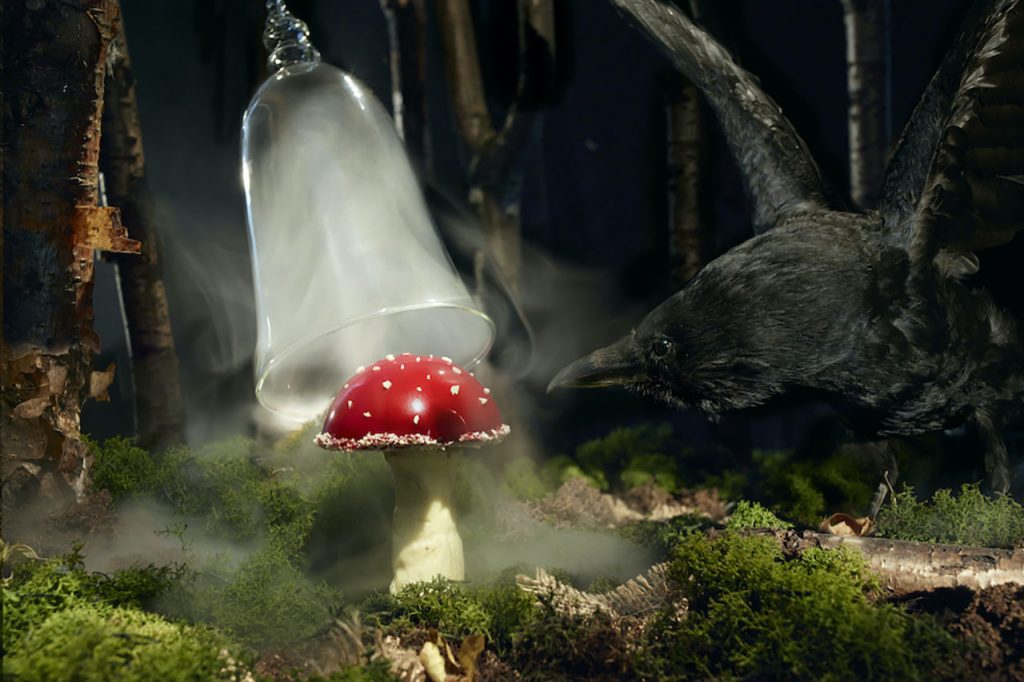
What’s good about the experience?
- There are many things that are excellent about Park Row and the Monarch Theatre dining experience. I felt like I was being immersed into the DC universe from the moment I stepped from the curb of London’s busy Soho and straight into a study at Bruce Wayne’s Manor. Quickly a doorman pulls a book and a secret entrance is revealed, where I am left by myself to descend a deep spiralling staircase. The soundscape is bold, cinematic and vibrates through you. It’s dark, smokey and fluorescently lit through an impressive central light structure. I knew instantly where I was! This was a secret entrance into the Batcave that potentially no one else other than Alfred himself has ever used before.
“Pow! I’ve been successfully onboarded into the world right from the off and not a single person has yet spoken to me. That’s impressive and something a lot of attractions could take note of.”
- Once inside the restaurant and bar areas you are struck instantly with how unique but familiar everything feels. This is Gotham without a doubt. The decor is that familiar Art Deco but with a timeless modern twist, the staff wear uniforms that instantly align them to the unmistakable fashion of The Penguin, whilst the lighting is sharp, moody and noir. I could have walked into this world with no prior engagement or knowledge of the event and have known instantly which fictional universe I was standing in.
- “The devil is in the detail” and that is what is most impressive about Park Row. Everything that appears is a clever nod to the lore and backstory of the Batman narrative. However it is consistently subtle, and I love that. To find the real gems you have to look and take notice: you aren’t bombarded with the obvious.
“This isn’t a ‘Disneyland attraction’ where you can get your photo taken with a waitress who is cosplaying your favourite mainstream DC character.”
- The lead character here is the world itself and its clever aestetic, which because of its richness and subtlety will manage to submerge all variants of audience from those hugely knowledgeable fans to those who only dip in and out of the odd movie. By having the physical world so on point it means that by merely stepping into it, you yourself become a character of Gotham and that is true immersion.
- Of course as a dining experience the star of the night really is the food itself. I have never experienced an evening where my taste buds have been taken on such a well-crafted journey from beginning to end. Every one of my 11 courses was incredibly balanced, inventively presented and deeply yet delicately structured. The wine tasting menu that accompanied each dish always elevated each course and each plate genuinely wowed me. I am by no means a food critic but it is clear how much thought and craft had gone into each morsel. It was the food itself that led the narrative and that is not something I have ever encountered before.
What could be improved?
- However, for all of the attention to detail and pure invention within the physical aesthetic and food itself, I couldn’t help but feel let down by the theatrical moments that were presented to us. It feels to me that world-class designers, researchers, architects, chefs and imagineers have all been brought together on this project but somehow a genuine theatrical director has been overlooked.
- We were held in a waiting room before entering the main dining experience and presented with a host who I believe clearly belonged to the world outside and not part of the DC universe. If you have someone that is presenting clear narratives and dialogue that needs to be charismatically delivered in order to enhance and drive the audience’s experience, then it should almost certainly be done by a trained performer.
“It felt to me that all the theatrical moments and theme shifts throughout the dining experience had been considered, but only half steps had been made to realise them.”
- The content projected on the walls paid only lip service to an idea, such as raining gold leaf or a simple ballerina spinning. I was constantly left feeling that more could have been done with both the technology and the theatricality of the idea being presented. There was a moment where the lights were cut out for dramatic effect but no real sense of a blackout was achieved. It seems like I was always being presented with the idea of how I should feel but never actually made to feel it.
- My main piece of advice would be, don’t be scared to make an audience momentarily feel uncomfortable. They will take it and thank you for giving them a real gear shift through their experience. What stands DC apart, especially with its villains, is the dark psychological edge that it presents. In my humble opinion when representing this particular IP you must have moments of that darkness realised in order to truly do it justice. A perfect place for this, for instance, would have been in the Joker transition when alongside the visuals of a padded cell, adding an uncomfortable soundscape that momentarily feels unbearable but sets you well inside the villain’s chaotic mind.
- In the same way that an edible pearl full of celeriac expertly managed to blow my pallet and leave me perfectly poised for the next dish, so too could moments of the theatrics make me feel I was on an ever evolving and surprising narrative journey.
Which elements do you like so much you’d like to use them in your work?
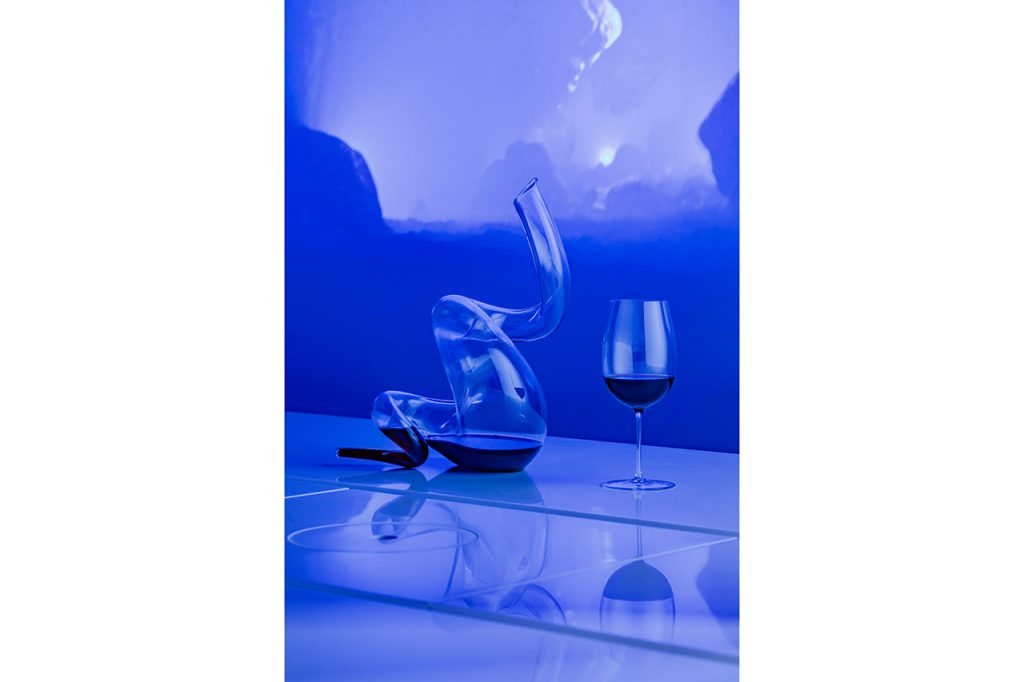
- There are a couple of things that as an immersive experience designer I take away from Park Row. The first is how impactful the sense of taste can be within an audience’s theatrical journey. I am constantly making work that considers in detail the sense of sight, sound, smell and touch, but I have always shied away from exploring taste. However, I’m now coming to realise just how deep a visceral feeling it can provoke if designed to the exacting detail that as a director I consider everything else.
“Taste really does have the power to surprise, shock, mislead and excite whilst also unlocking memories and feelings that are seemingly forgotten or locked away – an immersive designer’s dream!”
- The second thing that I really take on board is how important it is to get the subtle details right in the aethestic of an immersive world, especially when presenting a much loved and well known product and IP. People who have grown up with and previously investigated a well-known fictional world such as Gotham already understand it at a deeper level than they themselves initially comprehend. They will recognize nuances as instantly as they would at an old family home from childhood. Deep in their memory bank are subtle details and “truth triggers” that as makers we have to uncover and present as naturally as they appear in the original. It’s not well known characters that make an experience Immersive its the hidden detail of the world you step into.
Experience Monarch Theatre yourself. Book tickets here.
Read more WXO Experience Reviews:
- Swamp Motel’s The Kindling Hour across two reviews here and here
- The Royal Opera House’s VR-based Current Rising
- The New Meow Wolf In Las Vegas Is A Bright Blinky Light At The End Of The Pandemic Tunnel
- The Crystal Maze Live Experience
If you have created an experience and would like the WXO to review it, get in touch.

